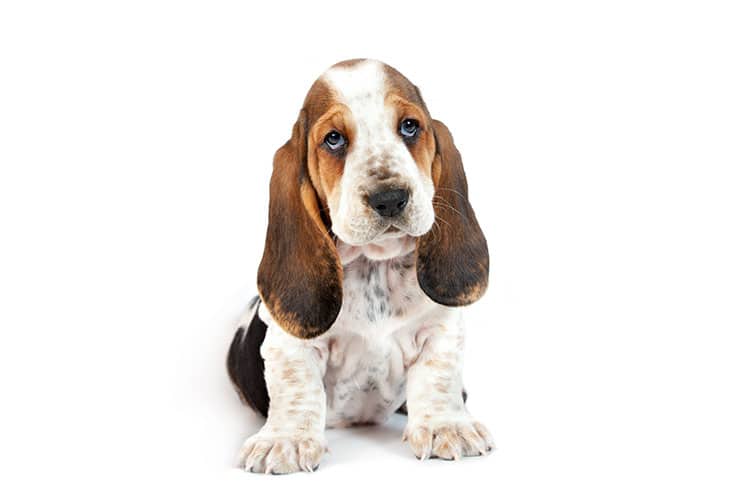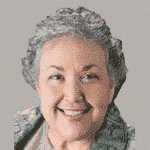


Home » Prioritizing: Is it the Same in the Breed Ring and the Whelping Box?

In a perfect world, the answer to the question above would be “yes.” But neither we nor our dogs are perfect. In fact, most of us have a subjective interpretation of our breed’s Standard framed by the latitude given within that very Standard. Add to that the myriad factors that enter into our decision-making regarding a breeding or the placement of a class of dogs in a show, and we have the concept of prioritization entering the process.
Let’s consider first the prioritizations that may go into making a breeding decision, and then in choosing resultant puppies to run on. Assuming you are the prospective dam’s owner, you have very carefully, and without emotion, evaluated the strengths and weaknesses of your bitch. You may have even invited the opinion(s) of longtime successful breeders of your breed. You have carefully researched, or witnessed, the strengths and weaknesses of her parents, grandparents, and great-grandparents. You have done the same for one, or several, potential mates. Importantly, you know which traits the parents, grandparents, and great-grandparents of the prospective sire and dam were prepotent for. If your bitch and prospective sire have already produced puppies, you have evaluated those offspring in the context of the contributions each parent made to the offspring—both good and bad contributions.
Consider the following hypothetical in my own breed, the Basset Hound. The prospective dam has never produced a litter. She has the following correct attributes: length to height ratio, ratio of the deepest part of the chest to ground when compared to height, head structure, ear structure and placement, shoulder layback is approximately 45 degrees; however, she displays a perfectly matched wrap-around front (radius and ulna both curve around the bottom of the rib cage so that the wrists are significantly closer than the points of the shoulders). The shoulder blade is laid on an oval-shaped rib cage that extends far back, including underneath. She has a level topline and muscular hindquarter.
Her weaknesses are: return of upper arm is approximately 38 degrees and is short, feet that are thin and not tight, straight in stifle and a long hock (rear pastern), light in bone, and tight-skinned. Her coming and going movement is parallel and her front is well supported. Her side gait indicates a pounding gait in the front and a severely shortened rear extension.
Her sire and dam have adequately loose skin, and the same strengths and weaknesses as she does. Her paternal grandsire and maternal grandsire are the same dog, having the same weaknesses that she does. The paternal granddam has correct feet, skin, bone, and hock length, as well as the same attributes she has. The maternal granddam (no relation to the paternal granddam) is much like the paternal granddam in structure, but has correct shoulder blade and upper arm angulation, a well-bent stifle, short hocks, tight, round and well-padded feet, and moves powerfully with full reach and extension of the forequarters and hindquarters.
The prospective sire being considered has sired one litter; however, they have not reached maturity and evaluations have been difficult to come by. The dam of that litter is much like our hypothetical dam, but with more bone.
The prospective sire has the following attributes: strong bone and substance, loose skin, correct head and ears, long rib cage, level topline, well laid-back shoulder (45-degree), muscular hindquarters, well let-down stifle, short hocks, long rib cage, massive and tight, round feet with tough heavy pads, and a side gait that shows full reach and extension behind.
His weaknesses are as follows: short upper arm set at 30 degrees, rib cage that is not oval but rather barrel-shaped through its horizontal midpoint and then falling straight down, movement coming toward you is wide with little to no wrap (ulna and radius lack sufficient curvature to form a wrap-around front), reach to the front and extension underneath the body of the front legs is inadequate as exhibited by the pounding front gait, legs and ground clearance (bottom of deepest point of rib cage to ground) are short and not conducive to free movement when working in the field.
The prospective sire’s sire and dam are identical in every way except color. His paternal and maternal grandparents and great-grandparents follow the same style, strengths, and weaknesses, since the prospective sire is the product of generations of very close breeding.
Our prospective dam’s owner decides to go ahead with the breeding to the prospective sire described above, prioritizing for more bone, substance, skin, better hock length, and better feet. The prospective dam is totally unrelated to the prospective sire. Eight puppies are born, and at 12 weeks of age they are evaluated by the dam’s owner and a couple of successful longtime breeders. Of the eight puppies, it is agreed that three puppies should be run on to evaluate how the forequarters progress. The other five puppies, while sufficient in bone and substance, lack the structural attributes of the dam, and have the same weaknesses of the sire’s forequarters.
At six months of age, the remaining three puppies are evaluated by the same individuals. Two puppies have not developed wrap-around fronts, while the third puppy is an improvement over the sire but is still lacking in correct length and return angle of upper arm. Our dam’s owner decides to keep the third puppy as it has satisfied the prioritization for more bone, substance, skin, shorter hock length and tighter feet. The dam’s owner is well aware of the need for a wrap-around front, as this low-slung breed bears 65-69 percent[1] of a chondrodystrophic dog’s weight standing and in motion.
Consider the prioritizations that go into decision-making in judging the breed. We’ll stick with the Basset Hound. The judge must evaluate each exhibit in approximately 2-1/2 minutes per dog, taking into consideration what the Breed Standard has stipulated is wanted—and what is not wanted. What is not wanted, in this instance, are faults categorized in the Breed Standard as to severity: disqualifying fault, serious fault, fault.
The judge is familiar with this breed, having judged it for over 20 years all over the country and abroad. The judge has seen this breed go through changes in amount of bone and skin, ground clearance, head planes, rib cage length and shape, shoulder blade layback and lay-on, as well as upper arm length and return angulation, and sternal protuberance. For the past 4-5 years, this judge has been seeing shortened rib cages, less wrap in the wrap-around front, and mismatched fronts (ulna and radius of one foreleg is curved while the other foreleg is not curved). Only the occasional exhibit has the correct forequarter structure in its entirety: blade (scapula) layback and lay-on, upper arm (humerus) length and return angle, wrap-around front sitting on an oval-shaped rib cage. Consequently, the smooth, powerful, and effortless gait called for in the Breed Standard is seldom seen.
On this day, the judge is faced with a class of six mature bitches. Two have most of the desired qualities described by the Standard and the judge moves those to the front of the line. The judge now has to think about what the placement of these two will be, as well as the remainder of the class.
Placements for third and fourth each are lacking correct forequarters and hindquarters and move with great choppy effort. Third places above fourth due to the strong parallel movement going away. The remaining two that are not in contention for placements do not lack merit, but probably should not be made up to champion level. Placing the two at the head of the line remains to be considered, as they have almost identical strengths. However, Bitch A’s rib cage could be longer underneath, as the end of the back of the sternum underneath (xiphoid process) lies only slightly behind the front legs, and Bitch B is lacking the correct complete wrap of front, but not so egregious as to not have any wrap at all.
The judge is now thinking through the prioritization of the strengths and weaknesses of these two bitches, knowing that the front assembly is the most difficult to correct in this breed (at least three generations) and easiest to lose (one generation), while the rib cage can be corrected within one generation with correct breeding. This judge has had good mentors who not only explained structure and movement but also how easy or difficult it is to breed in (or out) certain traits. With this in mind, the judge places Bitch A first and Bitch B second.
Unlike the breeder in our first example, the judge did not have the luxury of knowing the parentage of each bitch in the class, what their respective ancestors looked like or produced, or the goals of each bitch’s owner for their breeding program and the particular bitch entered in that class.
Both the judge and the owner of the bitch want to bring forth the most correct specimen of the breed according to their learned interpretation of the Breed Standard. However, the judge is doing it with the figurative “one hand tied behind the back.” The judge has prioritized on correctness to the Breed Standard, the functionality of the dog for its intended purpose, and what the current state of weakness is in the breed. Through intense longtime study of the breed, including its purpose and trends of weaknesses and strengths, the judge has graded a class of mature bitches. The bitch’s owner, on the other hand, can take into consideration what needs to be prioritized based on the production records of sires, dams, grandsires/dams and great-grandsires/dams, the breeder’s goals for their program, and the goal for a particular breeding.
The prioritizations are coming from two different perspectives that, when properly exercised, serve to advance the breed.
1 Lappalainen AK, Pulkkinen HSM, Mölsä S, Junnila J, Hyytiäinen HK and Laitinen-Vapaavuori O (2023) Breed-typical front limb angular deformity is associated with clinical findings in three chondrodysplastic dog breeds. Front. Vet. Sci. 9:1099903. doi: 10.3389/fvets.2022.1099903
Featured photo courtesy by the American Kennel Club (AKC).
